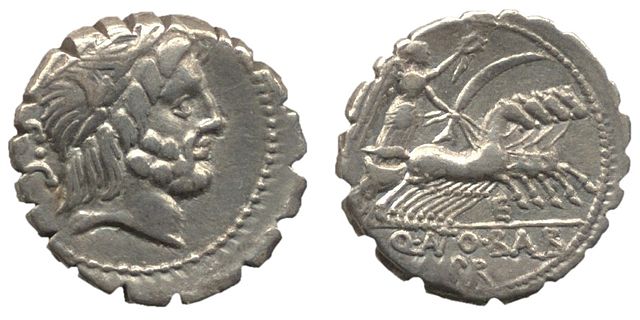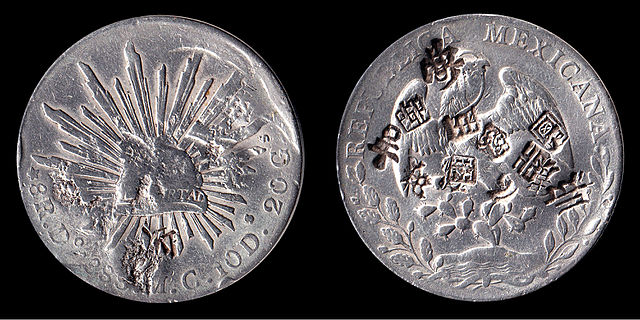The denarius was the standard Roman silver coin from its introduction in the Second Punic War c. 211 BC to the reign of Gordian III, when it was gradually replaced by the antoninianus. It continued to be minted in very small quantities, likely for ceremonial purposes, until and through the Tetrarchy (293–313).
Denarius of Octavian and Mark Antony, struck at Ephesus in 41 BC. The coin commemorated the two men's defeat of Brutus and Cassius a year earlier as well as celebrating the new Second Triumvirate.
Top row (left to right): 157 BC Roman Republic, 73 AD Vespasian, 161 AD Marcus Aurelius, 194 AD Septimius Severus; Second row (left to right): 199 AD Caracalla, 200 AD Julia Domna, 219 AD Elagabalus, 236 AD Maximinus Thrax
Flavia Domitilla, wife of Vespasian and mother of Titus and Domitian
Quintus Antonius Balbus (c. 83–82 BC)
Silver coins are one of the oldest mass-produced form of coinage. Silver has been used as a coinage metal since the times of the Greeks; their silver drachmas were popular trade coins. The ancient Persians used silver coins between 612–330 BC. Before 1797, British pennies were made of silver.
Silver drachma from the island of Aegina, after 404 BC
Dirham minted in the name of the Aghlabid ruler Ibrahim I (800-812) and the Abbasid Caliph al-Ma'mun (813-832). It is similar to regular Abbasid dirhams but showing early signs of emerging independent coin types.
A silver coin made during the reign of the Mughal Emperor Alamgir II
1888 Mexican 8 Real coin with Chinese chop marks








